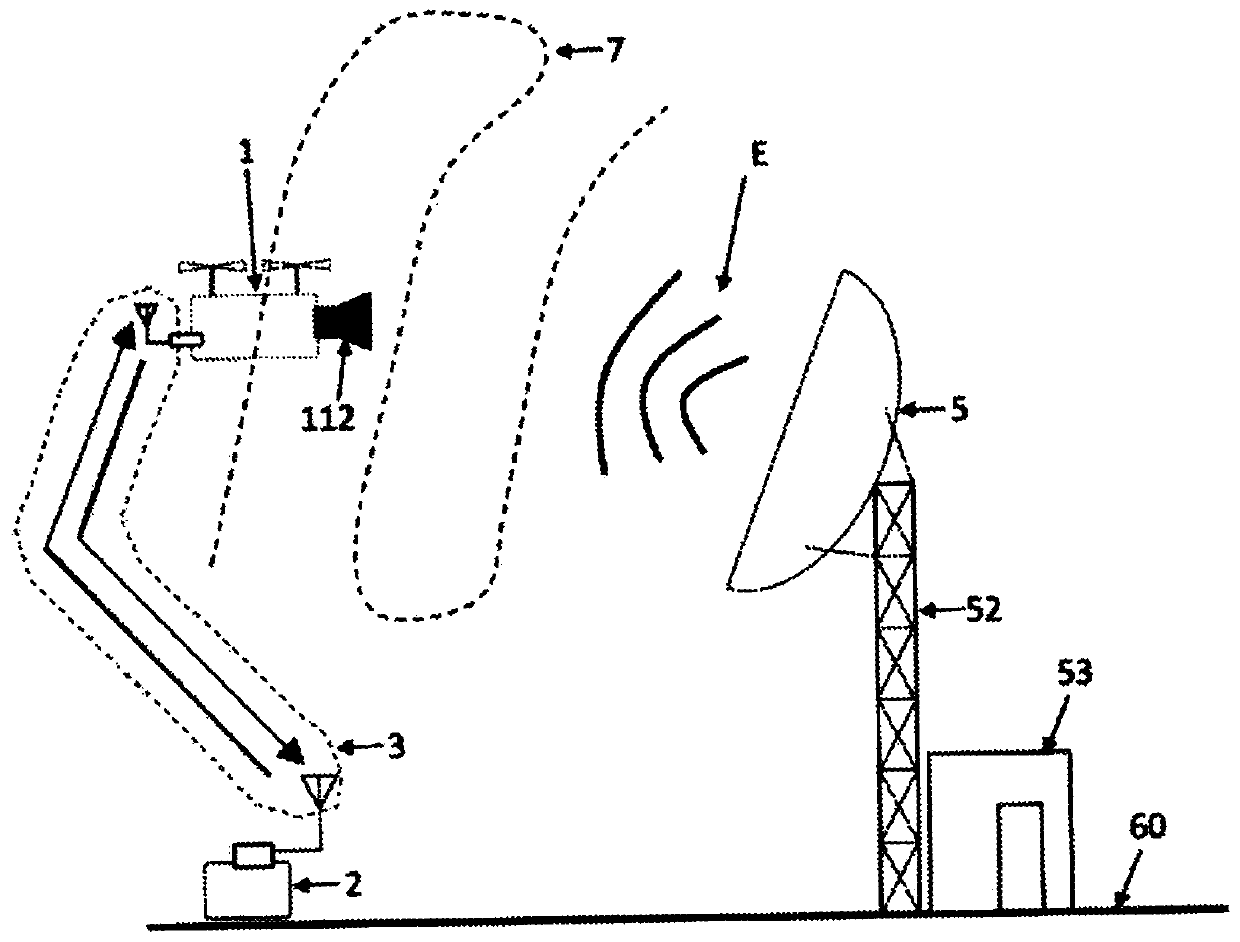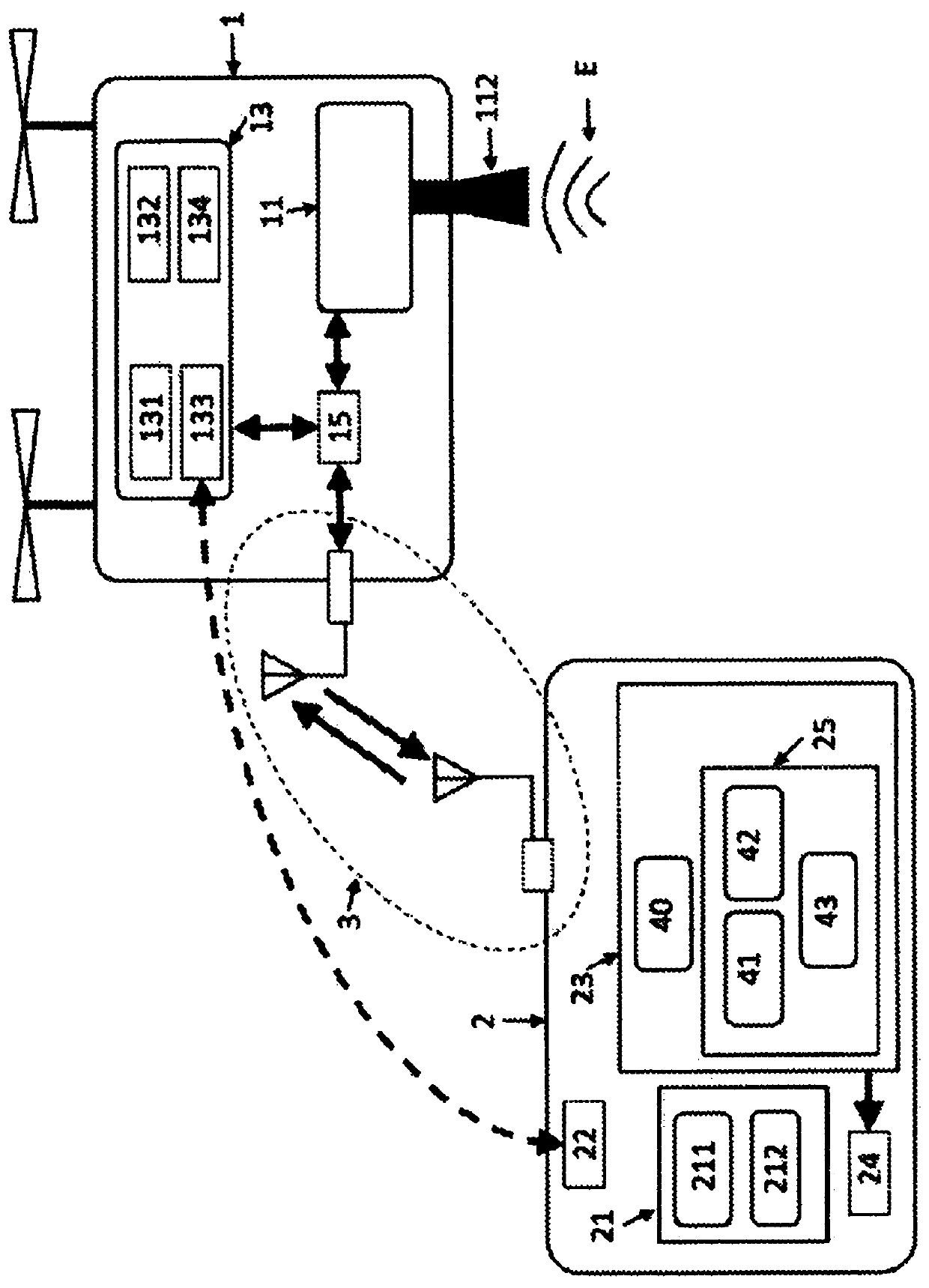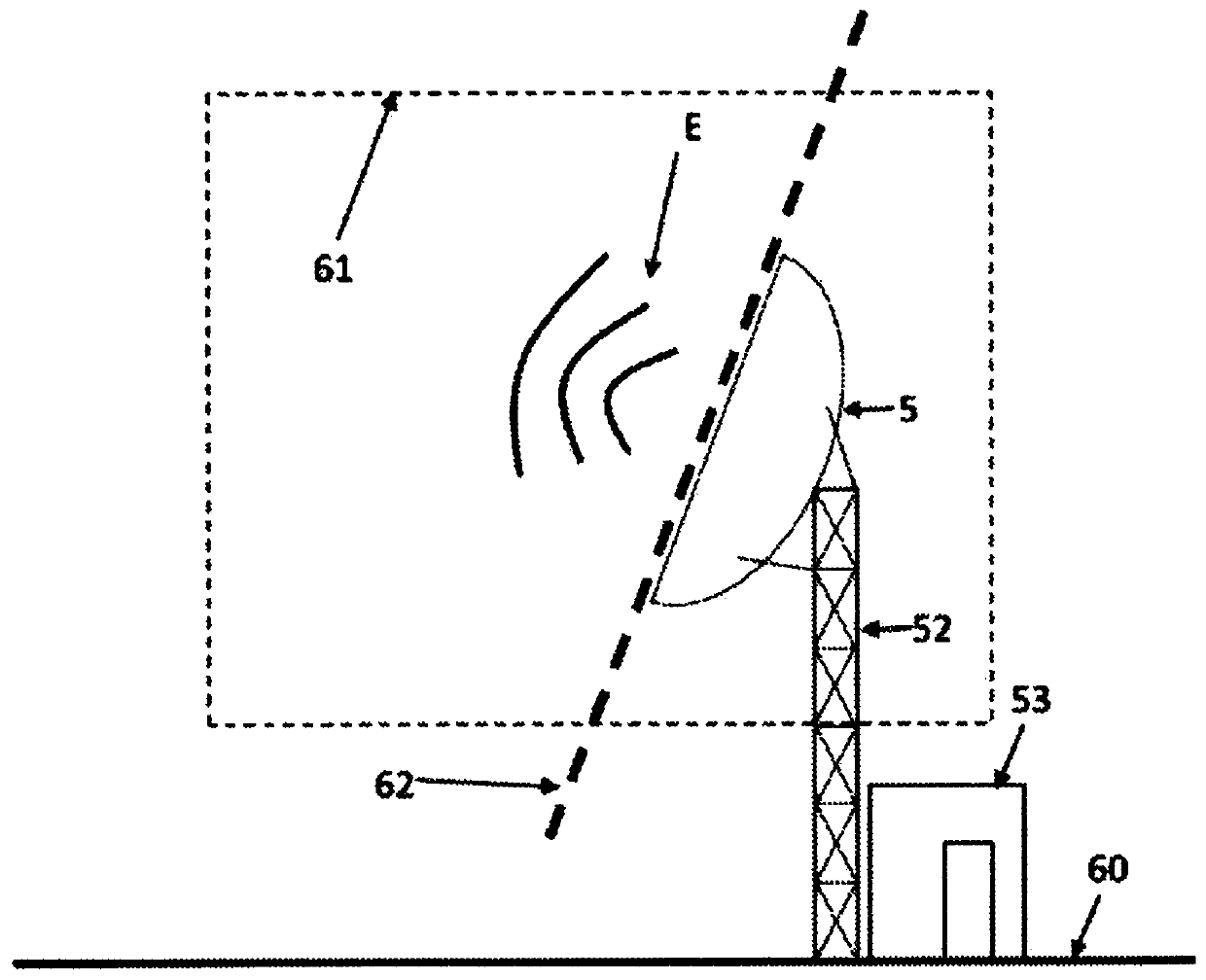Airborne systems and methods for characterization and measurement of antennas or radiating systems
一种辐射系统、天线的技术,应用在通信系统,处理辐射的电磁场领域,能够解决飞行器失去控制、削弱、破坏运行能力等问题
- Summary
- Abstract
- Description
- Claims
- Application Information
AI Technical Summary
Problems solved by technology
Method used
Image
Examples
example 1
[0101] A first example of an embodiment of the invention is based on the use of a single aeronautical module (1) for the measurement and characterization of an antenna or radiating system (5) consisting of the GSM-900 frequency band (890MHz to 960MHz frequency band) The mobile phone base station antenna in , which consists of clusters of eight patch-like elements arranged along a vertical axis perpendicular to the ground (60), has a physical length of 1 m. The aeronautical module (1) used is a drone of the multi-rotor type, more specifically an octorotor with its corresponding aeronautical control unit (15) and a set of batteries. The Aeronautical Control Unit (15) is realized and programmed by a microcontroller (Raspberry Pi type) to collect information from the Electromagnetic Emission Measurement Unit (11) and the Positioning and Guidance System (13) to control the flight of the Aeronautical Module (1) parameters and exchange information with the ground station (2).
[010...
example 2
[0124] For this embodiment, the system described in Example 1 is used, but using a coherent detector in the 100 MHz to 3 GHz band with two output channels corresponding to the real and imaginary parts of the complex signal being measured, where In this case, the complex signal is the electromagnetic field (E) radiated by the mobile phone base station antenna. Each output channel provides a voltage proportional to the real and imaginary parts of the radiated electromagnetic field (E).
[0125] Since the weight of the coherent detector used is greater than that of the power detector, the articulated arm for installing the receiving antenna (112) is also omitted in this embodiment, and it is directly attached to the aeronautical module (1). In this embodiment, the positioning and guidance system (13) of the aeronautical module (1) is responsible for keeping the receiving antenna (112) oriented towards the mobile phone base station antenna throughout the measurement path (7).
[...
example 3
[0130] For this example, the system described in example 1 was used, but with two aeronautical modules (1). Two measurement paths (7) are defined: the first one consists of a zigzag path contained in a 6m x 6m vertical plane located 5m in front of the antenna plane (62) of the mobile phone base station antenna and relative to the antenna centered. The second one is the same as the first one, but the second one is deployed 5m behind the aperture plane (62) to characterize the backward radiation of the mobile phone base station antenna. In this embodiment, by using power detectors in both aeronautical modules (1), an iterative phase recovery algorithm (40) needs to be applied.
[0131] It can be seen that with more measurement points, the iterative phase recovery algorithm (40) needs to perform 45 iterations to obtain the theoretical electromagnetic field amplitude calculated according to a set of auxiliary coefficients and the amplitude of the radiated electromagnetic field (E...
PUM
 Login to View More
Login to View More Abstract
Description
Claims
Application Information
 Login to View More
Login to View More - R&D
- Intellectual Property
- Life Sciences
- Materials
- Tech Scout
- Unparalleled Data Quality
- Higher Quality Content
- 60% Fewer Hallucinations
Browse by: Latest US Patents, China's latest patents, Technical Efficacy Thesaurus, Application Domain, Technology Topic, Popular Technical Reports.
© 2025 PatSnap. All rights reserved.Legal|Privacy policy|Modern Slavery Act Transparency Statement|Sitemap|About US| Contact US: help@patsnap.com



